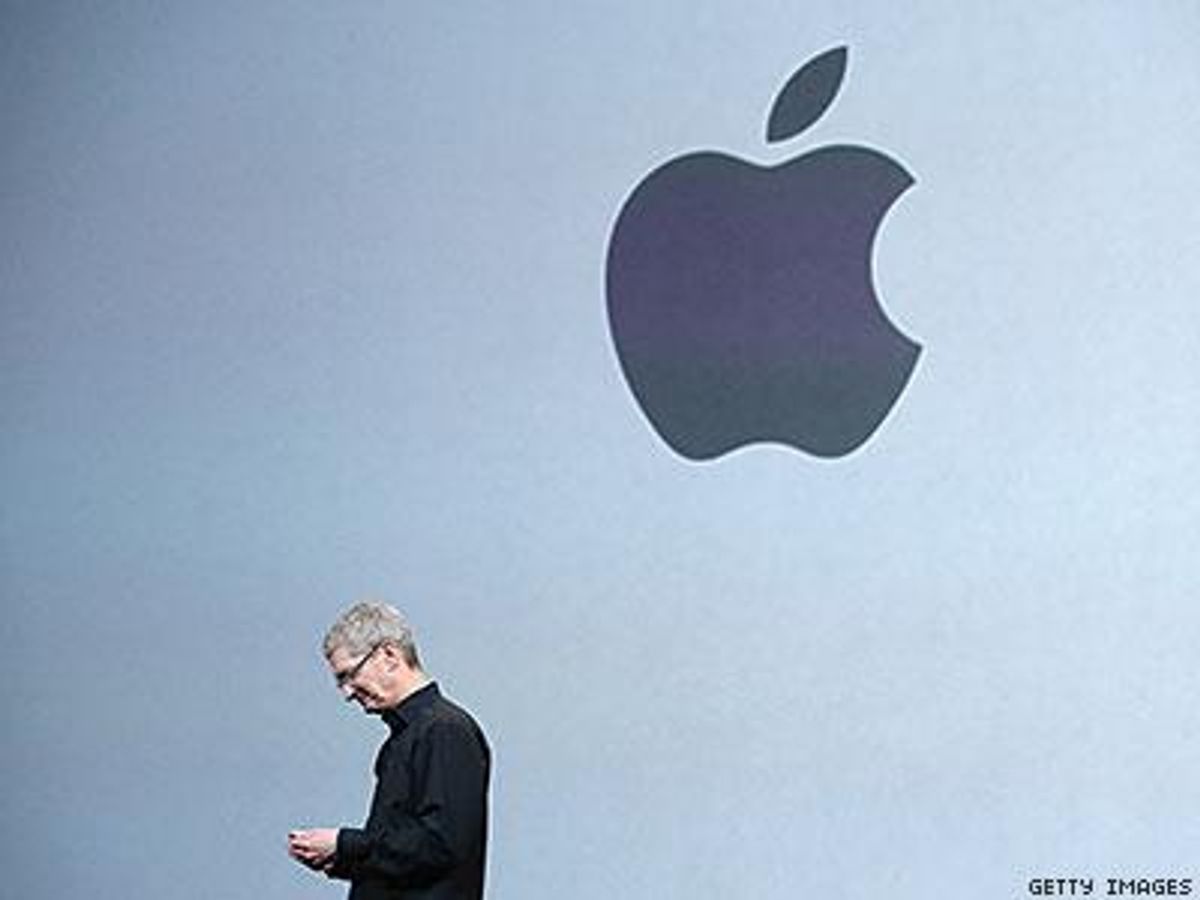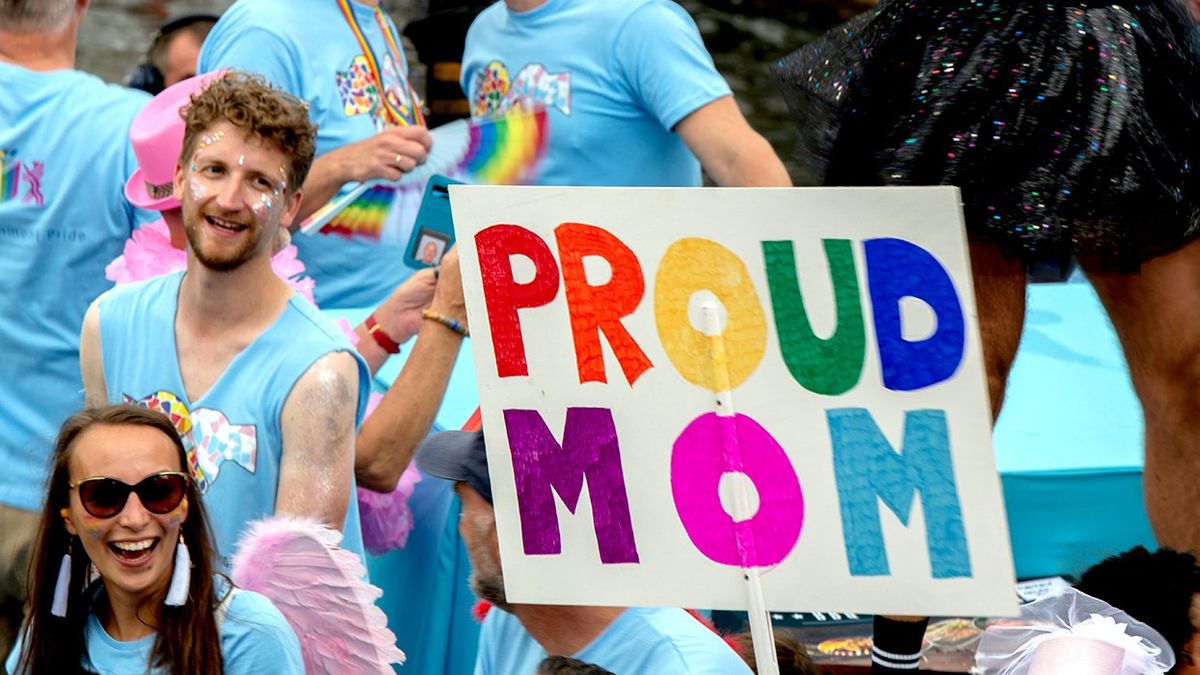 On October 30, 2014, Tim Cook told the world he was proud to be gay, ending years of speculation and making him the first CEO of a Fortune 500 company to come out of the closet willingly. For a man so famously private, his decision to reveal a very personal part of himself was not an insubstantial decision for the CEO of one of the world's most valuable companies. Given the remarkable advances in civil rights, it's notable that the corner office suite is one of the last remaining frontiers for LGBT people. And it's clear that financial performance isn't the only measure by which CEOs are evaluated. Is Cook an anomaly, or will the next wave in corporate culture be one in which the professional meets the personal, in the name of good business?
On October 30, 2014, Tim Cook told the world he was proud to be gay, ending years of speculation and making him the first CEO of a Fortune 500 company to come out of the closet willingly. For a man so famously private, his decision to reveal a very personal part of himself was not an insubstantial decision for the CEO of one of the world's most valuable companies. Given the remarkable advances in civil rights, it's notable that the corner office suite is one of the last remaining frontiers for LGBT people. And it's clear that financial performance isn't the only measure by which CEOs are evaluated. Is Cook an anomaly, or will the next wave in corporate culture be one in which the professional meets the personal, in the name of good business?
Cook's only predecessor as an openly gay CEO of a Fortune 500 company, perhaps the only person who can speak openly about the pressures Cook faced when considering coming out, and the benefits of doing so, is John Browne, who was CEO of oil giant BP from 1995 to 2007. He has advised five prime ministers and is chairman of the board of trustees of the Tate galleries, a fellow of the Royal Society, and a foreign member of the American Academy of Arts and Sciences. Browne is the author of The Glass Closet: Why Coming Out Is Good Business. Browne writes for The Advocate on Cook's coming out, and the benefits for business leaders in the future who foster more accepting, open work practices.
On the day of Tim Cook's announcement, I happened to be in Silicon Valley. I was there to speak at a class on leadership at the Stanford Graduate School of Business. As I was leaving, the professor in charge, whom I have known for many years, told me that very few guest speakers had talked about their professional lives. Instead, they had spoken about challenges in their private lives, and about how those had affected the way they approached their work. On a program at one of the world's leading business schools, personal struggles were given the same importance as strategy, dealmaking, and negotiation. It was a fitting accompaniment to Cook's courageous article.
When I wrote The Glass Closet, about the acceptance and inclusion of LGBT people in business, there was still no openly gay chief executive of a Fortune 500 company. In fact, you had to go into the Fortune 700 before finding one. I remained the most senior business leader to have come out, or to have been outed, as gay. It was a welcome sign of progress for Cook to take that title away from me.
Cook wrote that he had been open with colleagues for a long time but had never acknowledged his sexuality publicly. That stemmed in part from a desire for privacy, but I expect that Cook, like me, also worried that public disclosure would damage his ability to do his job. But by deciding to disclose his sexuality, Cook has united his public and private lives. He will no longer have to devote valuable energy to concealing part of his identity, energy that can now be used productively in the pursuit of more fulfilling personal and professional lives. He has shown bravery many others and I did not have.
 Over the course of my own 41-year career at BP, from apprentice to chief executive, I remained in the closet. When I joined BP in 1966 as a graduate trainee in Anchorage, Alaska, it would have been a career-ending move to come out as gay. Men lived their lives in the macho, sometimes homophobic, environments on the oil rigs or in the bars. I felt that I had to conform, so I avoided social occasions where the absence of a wife or girlfriend might have been questioned. If people challenged me, I evaded them or changed the subject.
Over the course of my own 41-year career at BP, from apprentice to chief executive, I remained in the closet. When I joined BP in 1966 as a graduate trainee in Anchorage, Alaska, it would have been a career-ending move to come out as gay. Men lived their lives in the macho, sometimes homophobic, environments on the oil rigs or in the bars. I felt that I had to conform, so I avoided social occasions where the absence of a wife or girlfriend might have been questioned. If people challenged me, I evaded them or changed the subject.
By the time I became chief executive, BP had become my family, and I regarded personal discretion as vital to the company's interests. I thought that a CEO was the public face of a corporation and must maintain productive relationships with governments, suppliers, and other CEOs -- not all of whom treat LGBT people with the same respect they show to straight colleagues. I was terrified that if I came out, I would lose respect, friends, and business contacts, so I concluded that keeping my professional and personal lives separate was better for each of them.
In an effort to maintain my double life, I made three fatal errors of judgement. First, in an attempt to reduce the risk of somebody finding out my secret, I met a man on an escort website. Second, I built a relationship with him, and was surprised when he sold our story to a British tabloid newspaper. Third, I went to court in an attempt to protect my privacy and lied in a legal document about how we met each other. I reversed that lie within days, but the case eventually collapsed. I resigned and lost the career that had structured my entire professional life.
When I was dragged out of the closet, my worst fears did not come true. I gained friends, lead a more fulfilling private life, and have a wider set of business contacts as a result. Many of the people I interviewed for The Glass Closet expressed a desire to come out, but only when "the time is right." For some, that meant after a promotion, and for others -- particularly athletes -- it meant after retirement. For me, the "right time" would never come because I had invested too much in my double life. But it is possible to come out on your own terms without your worst fears coming true and while continuing to manage a successful career.
Evidence suggests that around one third of LGBT people remain in the closet at work. In writing The Glass Closet, I spoke to men and women around the world who, despite living in an age of diversity targets, LGBT corporate networks, and equal marriage, are still afraid of the consequences of coming out. That takes a personal toll on them; they fail to build a unified private and professional life, to the detriment of both. But it also takes a huge toll on their businesses, which suffer when employees do not feel included and are preoccupied by something other than their work. Companies with a fully engaged workforce outperform their peers by an average of 2% per year, every year for 20 years. The return to an inclusive environment is enormous, and in my experience, there are two things that business leaders can do to create that environment for LGBT people.
The first is to set the right tone from the top. Leaders who take LGBT inclusion seriously should dedicate a fixed amount of time to it, and ensure that positive messages are accompanied by meaningful changes in behavior, rather than processes that can be ignored. If leaders are asking people to bring their whole selves to work, they must also lead by example. I come from a generation in which people rarely discussed their personal lives at work. But times have changed, society has relaxed, and it turns out that people really do want to talk about what they did over the weekend; in fact, it is unusual if they do not. People have discovered that openness and authenticity are great ways to build engaged teams, and in my view, it is no longer possible for leaders to build a wall between their private and professional lives. Whether gay or straight, leaders can no longer choose to lead selectively. As I found out at Stanford, leaders are beginning to realize that they have a responsibility to lead in all aspects of their life. That will become the norm for the leaders of tomorrow, and it will make a major contribution to LGBT acceptance and inclusion.
 At left: John Browne
At left: John Browne
The second thing that leaders can do is identify and celebrate role models. Role models are not examples to emulate but sources of inspiration that teach us something we can apply to our own circumstances. The Glass Closet is full of role models, stories of people who had come out in a good way and people who had come out in a bad way. I collected their stories so they could inspire others to come out when it is safe. The feedback I have received, both from the book and from the stories on GlassCloset.org, suggests that they have had a significant impact on the way in which people approach LGBT inclusion at work. Anybody struggling with a hidden life should take inspiration from these role models, and any leader who wants to create a safe and inclusive environment should celebrate them. They demonstrate that it is possible to come out and succeed.
The job of LGBT inclusion is far from complete, not least in the 77 countries where it is a criminal or capital offense to engage in a homosexual act. Companies cannot change the law, but the existence of an out gay CEO of a globally popular company will send an important signal. Businesses can be very direct with overtly prejudiced suppliers and clients by choosing not to work with them. When it comes to customers and governments over which they have no control, companies have to rely on more subtle economic nudges. That may result in some short-term setbacks, but in my experience, economic interest eventually trumps prejudice. The same strategy applies even in advanced countries like the United States, where the experiences of LGBT people in San Francisco, for example, remain a world away from the experiences of those in many other parts of the country. Progress is slow and uneven, and constant vigilance is needed.
We must also maintain a sense of perspective. With Tim Cook, the Fortune 500 has gone from having no LGBT CEOs to having just one. When Christopher Bailey was promoted to the CEO position at Burberry in the United Kingdom, he became the only out gay CEO in the FTSE 100. This seems statistically improbable. The job is not yet done.
LGBT people need to work in partnership with the heterosexual majority to drive progress. Gay and straight leaders can start by setting the right tone from the top, applying a holistic approach to leadership, and celebrating LGBT role models from the C-suite to the shop floor. But the responsibility to build an inclusive environment is not theirs alone. Change does not happen unless individuals take their careers into their own hands and find the courage to step out of the closet into the true beauty beyond.
Business sometimes clings to the past and lags behind progress in society. But at its best, it is the engine of human progress. From apartheid to the fight against climate change, and from equal pay to equal marriage, business has been at the forefront of social change. Cook's announcement represents several more bricks in the wall of LGBT acceptance and inclusion, but I am convinced that the best is yet to come.



 On October 30, 2014, Tim Cook told the world he was proud to be gay, ending years of speculation and making him the first CEO of a Fortune 500 company to come out of the closet willingly. For a man so famously private, his decision to reveal a very personal part of himself was not an insubstantial decision for the CEO of one of the world's most valuable companies. Given the remarkable advances in civil rights, it's notable that the corner office suite is one of the last remaining frontiers for LGBT people. And it's clear that financial performance isn't the only measure by which CEOs are evaluated. Is Cook an anomaly, or will the next wave in corporate culture be one in which the professional meets the personal, in the name of good business?
On October 30, 2014, Tim Cook told the world he was proud to be gay, ending years of speculation and making him the first CEO of a Fortune 500 company to come out of the closet willingly. For a man so famously private, his decision to reveal a very personal part of himself was not an insubstantial decision for the CEO of one of the world's most valuable companies. Given the remarkable advances in civil rights, it's notable that the corner office suite is one of the last remaining frontiers for LGBT people. And it's clear that financial performance isn't the only measure by which CEOs are evaluated. Is Cook an anomaly, or will the next wave in corporate culture be one in which the professional meets the personal, in the name of good business? Over the course of my own 41-year career at BP, from apprentice to chief executive, I remained in the closet. When I joined BP in 1966 as a graduate trainee in Anchorage, Alaska, it would have been a career-ending move to come out as gay. Men lived their lives in the macho, sometimes homophobic, environments on the oil rigs or in the bars. I felt that I had to conform, so I avoided social occasions where the absence of a wife or girlfriend might have been questioned. If people challenged me, I evaded them or changed the subject.
Over the course of my own 41-year career at BP, from apprentice to chief executive, I remained in the closet. When I joined BP in 1966 as a graduate trainee in Anchorage, Alaska, it would have been a career-ending move to come out as gay. Men lived their lives in the macho, sometimes homophobic, environments on the oil rigs or in the bars. I felt that I had to conform, so I avoided social occasions where the absence of a wife or girlfriend might have been questioned. If people challenged me, I evaded them or changed the subject. At left: John Browne
At left: John Browne
















































































